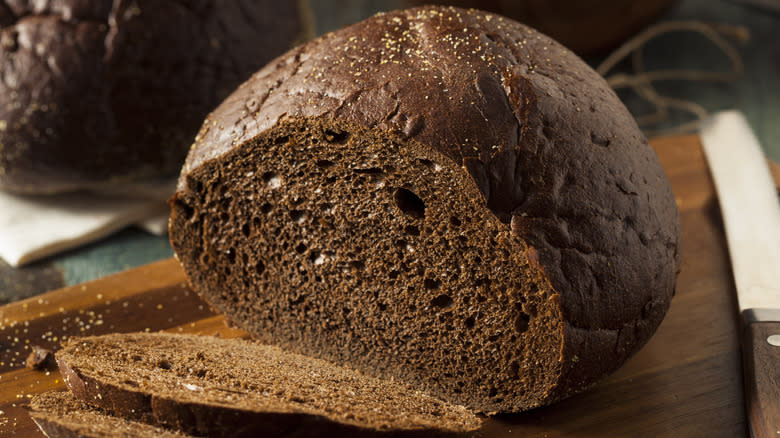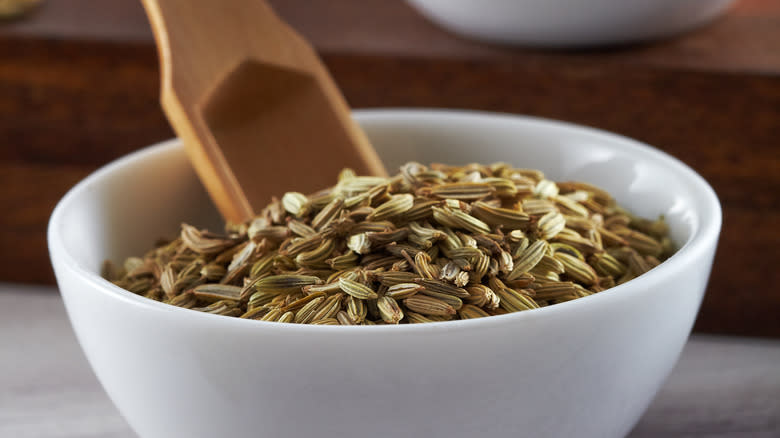Fennel Seed Is The Flavorful Herb That Will Elevate Your Favorite Loaf Of Pumpernickel

White, wheat, rye, or pumpernickel? Whenever you face a plethora of breads, pumpernickel is never a bad choice. With a robust flavor, the hearty bread packs a distinct punch. It's a strong, dark rye bread that uses a combination of rye flour, molasses, and other ingredients. Eat a slice or two and you won't be missing anything taste-wise ... but a little extra flavor never hurts. If you're looking to switch up your go-to pumpernickel, consider adding fennel seeds. They'll infuse a loaf with notes of anise and are certain to satisfy all of your taste buds.
The reason fennel seeds tend to complement pumpernickel boils down to both taste and texture. Like caraway seeds -- a common fix that deepens the flavor of rye bread -- fennel seeds offer a bit of crunch, as well as that spiced, licorice-like flavor. They therefore work particularly well across dark, hearty breads. These include pumpernickel, as well as marbled rye, Russian black bread, or a tried-and-true wheat bread.
To make this flavor addition all the easier, you don't actually need that many seeds. To switch up your bread game, just remember that a little fennel goes a long way -- though you can free to add more, depending on your preferences.
Read more: 23 Whole Foods Baked Goods, Ranked
A Few Fennel Seeds Can Boost The Flavor Of Pumpernickel Bread

Fennel may be a vegetable, but the seeds from the plant's flowers lend themselves perfectly to all things pumpernickel. If the combination intrigues you, simply pick up a jar of fennel seeds from the grocery store. The seeds come as a dried spice, and you can purchase them both toasted or not. If you opt for the latter, you may want to pop them in the oven before adding them to your bread. Toasting or roasting fennel seeds beforehand will enhance their flavor -- and ensure you're maximizing the seeds' potential.
From there, go ahead and make your pumpernickel as you normally would. An easy pumpernickel bread consists predominantly of flour: a combination of both rye and bread flour. There's also salt, yeast, molasses, water, and oil, among other variants. You'll want to add any seeds to your flour mixture from the get-go. The amount of seeds ranges. If you want just a slight upgrade, start with about a teaspoon. If you're ultra-confident in the flavor, however, up the ante to a tablespoon. So as long as you have a jar of seeds — or ground fennel if you're not into the crunch — incorporating some into your next loaf is as easy as, not cake, but bread!
Read the original article on Tasting Table.